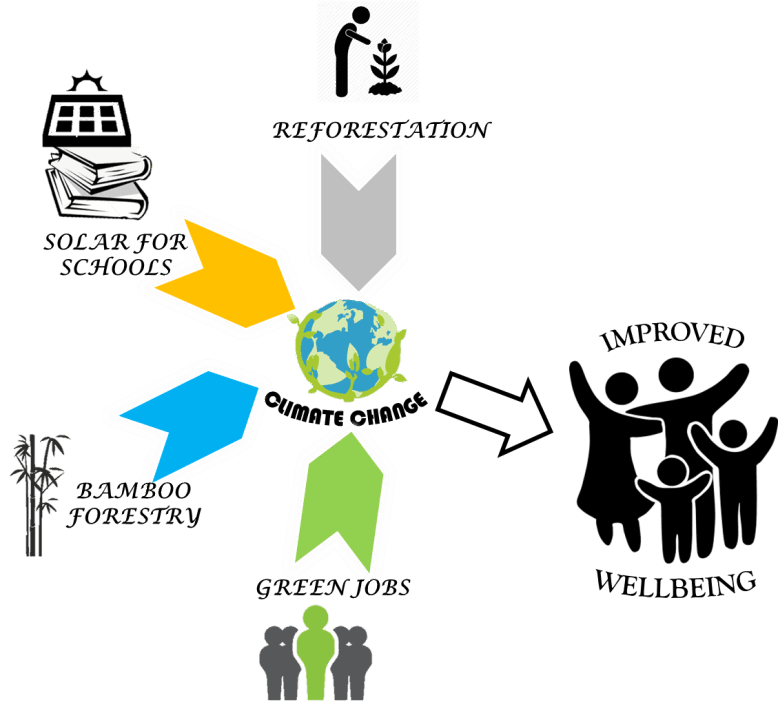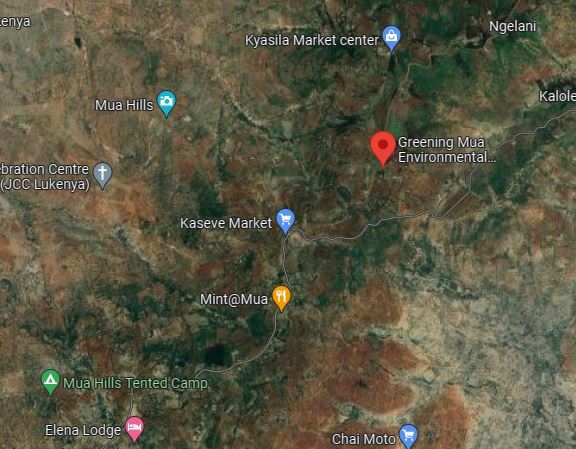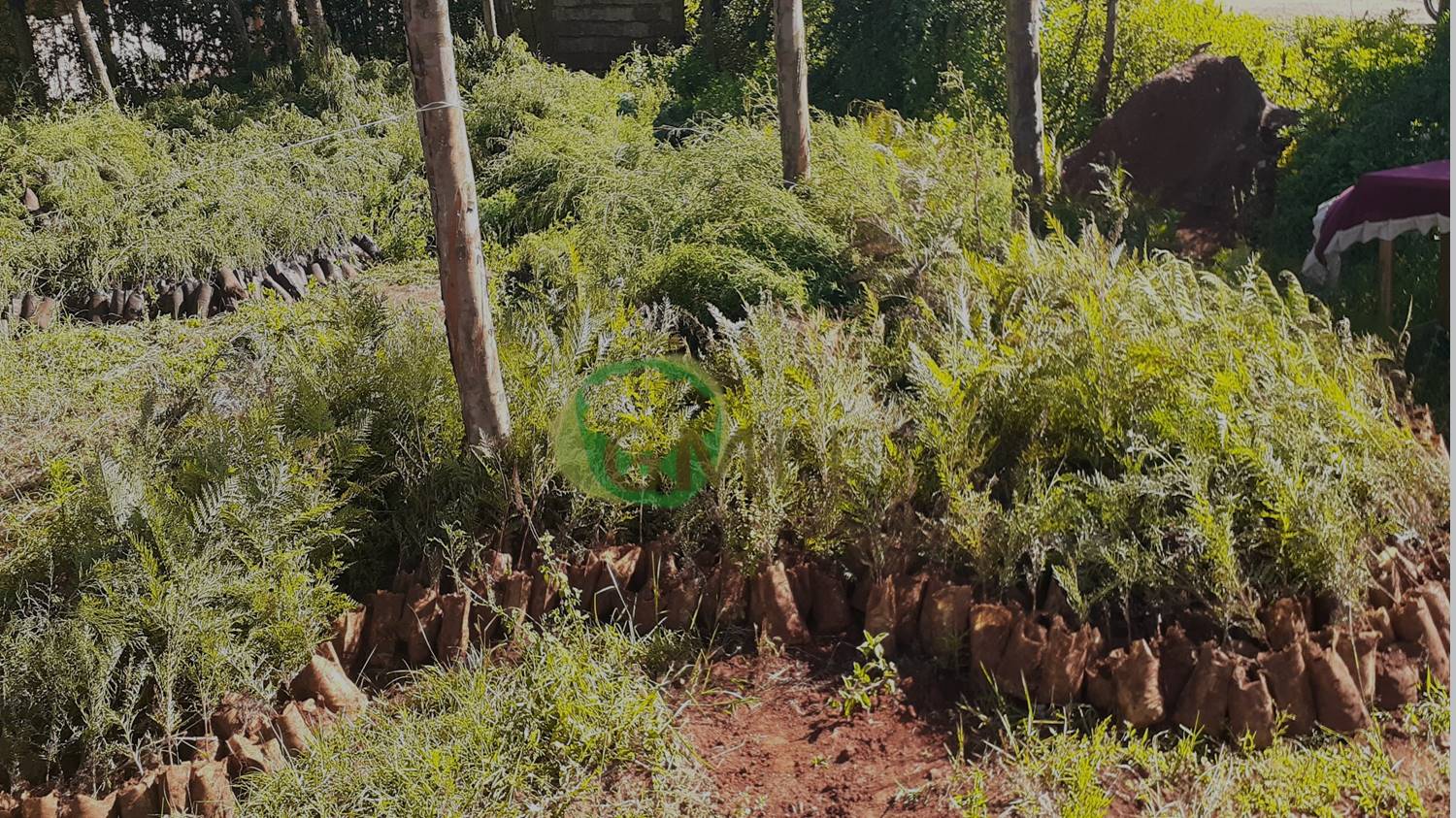About
Who We Are
Greening Mua Environmental Initiative (GMEI), a women and youth led Community Based Organization registered and operating in Machakos County, Kenya.
GMEI is driving a locally led climate action initiative aimed at restoring a forest cover that had been depleted over the last 60 years using an integrated approach; creating alternative sources of livelihoods to the community through;
Adaptation of the landscape approach responding to the call by the president of Kenya to restore Kenya’s forest cover to 10% by 2022 in support of the Paris Agreement; being part of the global effort to create carbon sink reservoirs and transforming the community’s linear model way of production to a circular one.
GMEI is driven by the philosophy of inclusion and powered by the spirit of passion and resilience.

Our Objectives
What We Do

To realize the goals, GMEI has established a climate change training center (CCTC) in Mua hills, Machakos, Kenya. A Center for building capacities for women, youth, persons with disability and the community at large with respect to afforestation; agroforestry, agribusiness, bamboo farming, partner programs among others. Currently the center has:
- A permanent registered commercial tree nursery with a capacity of 1 million seedlings.
- A fruit nursery for the agroforestry program
- A water pan for water collection
- Training shed
- Community I-Hub center
Our Goals
GMEI is implementing climate actions by addressing 9 out of the 17 SDGs. These include;
- 1 – No poverty
- 2 – Zero hunger
- 3 – Good health and Wellbeing
- 5 – Gender equality
- 6 – Clean water and sanitation
- 7 – Affordable clean energy
- 8 – Decent work and economic growth
- 13 – Climate Action
- 17 – Partnership for the Goals

Why Mua Hillls
Situated about 50 Kms east of Nairobi, Mua Hills is a crescent-shaped mountain with an elevation of about 2,000 meters above sea level. Mua Hills comprises about 130 square Kilometers and has at least 12,000 Hectares that was previously devoted to commercial fruit farming (plums, oranges, pears and apples) and timber by white farmers from the beginning of the 20th century. Since independence, in 1963, Mua hills has been occupied by indigenous people who have subdivided the land, cut most of the big trees and exposed the formerly pristine property to the vagaries of weather though destructive farming practices. Some evidence of past glory is some trenches and terraces dug by the pre-independence government as well as some lonely gigantic blue gums and cypress trees. The government of Kenya launched the ‘Greening Kenya Campaign’ in 2018, which focuses on growing trees in schools, universities, education centers, farmlands and dryland. The initiative is part of Kenya’s aim to plant 1.8 billion trees and achieve more than 10% forest cover in the country by 2022. “Planting a tree is continuing a battle against the global challenge of climate change. Kenya lives up to the aspirations of its citizens to uphold a bond of unity between the forests and the people,” said Jorge Laguna-Celis UN Environment Director of Governance Affairs“ during the launch of Green Kenya Campaign.

The role of forests in climate change mitigation cannot be gainsaid considering the benefits to local communities, the connection between forestry and climate change is critical to forest dependent communities who continually adapt new conditions caused by the phenomenon to derive their livelihoods. Rains are no longer predictable as they used to be, that is why rivers are drying up. With the greening Kenya Initiative gaining momentum, Mua Hills cannot be left behind since it is one of the productive hills in Machakos County yet with the climate change, its level of productivity is declining. Water sources have dried up and the ecosystem affected.
It takes Kenya Forest Service about one year to rehabilitate 5,000 hectares making it impossible for the government to achieve rehabilitation of forest reserves alone. Communities, individuals, institutions need to join hands with the governments to ensure that the target of planting 1.8 billion trees is achieved. GMEI’s target is to plant 1 million trees by 2021 and help the communities to grow the trees.
How we are doing it
GMEI has successfully used a unique community-led approach which has recorded a high success rate towards the realization of the Climate Action SDG 13 which calls for “taking urgent action to combat climate change and its impacts”. In its Climate Action interventions, GMEI works with and through existing community structures such as:
- Self Help Groups,
- Welfare Associations,
- Individuals with large pieces of land,
- Schools
- Faith Based Organizations.
GMEI sources the tree seedlings from the State Department of Correctional Services, avails to these groups and encourages the community to plant the tree seedlings in their land to re-habilitate the (Mua) hill which has experienced the adverse effects of deforestation. This approach is referred to as “The Mua Local Climate Action Model (MLCAM)”. This is an integrated approach that aims at conserving, restoring and protecting the gains of the initiatives. MLCAM ultimate goal is to establish “Model rural homes”

